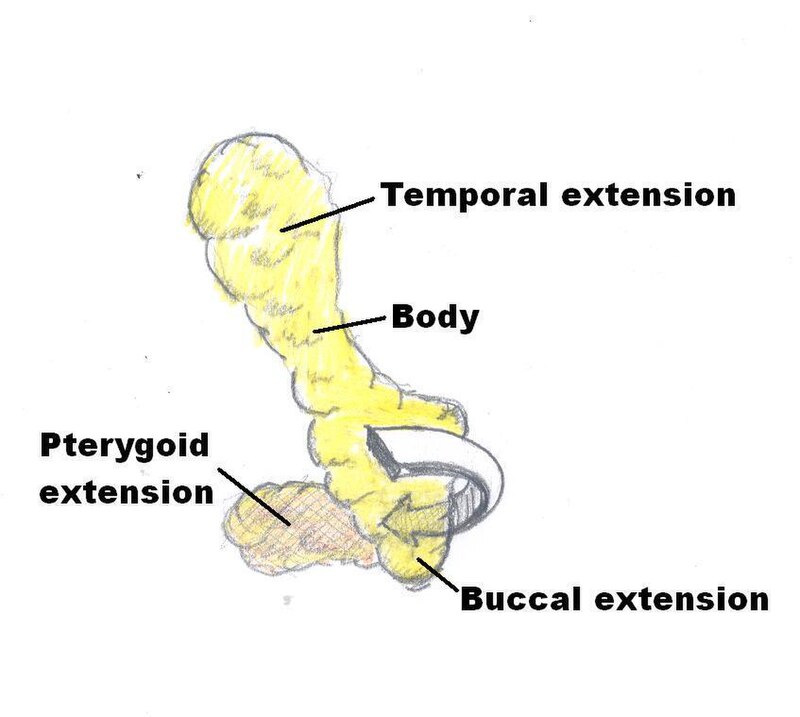D
Deleted member 3526
Apricot
- Joined
- Oct 14, 2019
- Posts
- 4,235
- Reputation
- 7,257
The buccal fat pad, is one of several encapsulated fat masses in the cheek. It is a deep fat pad located on either side of the face between the buccinator muscle and several more superficial muscles (including the masseter, the zygomaticus major, and the zygomaticus minor). It should not be confused with the malar fat pad, which is directly below the skin of the cheek.




What is buccal fat removal?
Also known as a buccal lipectomy, buccal fat removal surgery removes fat from your cheeks, slimming your face and giving your cheekbones more definition
The size of these pads varies from person to person, regardless of weight. In fact, large buccal fat pads are often hereditary, and they aren’t affected by diet and exercise.
You’ll have no visible scars from the cheek reduction, since the work is done inside your mouth.
“When done properly, buccal fat removal gives the face a model-esque look,” says Dr. Lara Devgan,
Final results are permanent, even if you gain weight.
Who's a good candidate for buccal fat pad removal?
“Buccal fat removal is a nice procedure for patients who feel that their face is overly round or chubby,” says Dr. Devgan. “It creates a slimmer, contoured, and more sculpted lower third of the face,” she says. Optimal candidates are within 20 pounds of their goal weight. While you can have chubby cheeks or an overly round face shape and not be overweight, you want to make sure it’s the buccal fat pads causing the roundness and not fat under the skin from weight gain.
Procedure
The surgical procedure starts with a topical anesthetic (or oral sedation, if you’d prefer to be in a light sleeplike state). The surgeon then makes small incisions, about a half-inch long, on the insides of your cheeks. “We then use fine-tipped surgical tools to tease out and dissect a walnut-size amount of fat,” says Dr. Devgan. The incisions are then stitched up with dissolvable stitches. “Most people tolerate the procedure very well and compare it to a dental procedure where you’re hanging out with your mouth open,” says Dr. Devgan. You’ll be sent home with a chin strap for support, antibiotic medication, and a medicated mouthwash to prevent infection.
What should you expect during buccal fat removal recovery?
At home, you’ll need to keep up a regular ice regimen, to reduce swelling and alleviate discomfort. “Apply ice packs to your cheeks for three days and drink ice water,” says Dr. Devgan. You’ll also need to wear the chin strap at night for the first two weeks, to give your facial skin some extra support. You can expect significant swelling for about a week. Due to the incisions inside your cheeks, you’ll want to stick to a soft-food diet and avoid anything too hot or spicy for at least 24 hours.
risks of buccal fat removal
Dr. Philip Robb says that the physician removing the pads has to be careful to avoid your facial ducts as well as those that carry your saliva. Because of this, there’s a chance of numbness or other changes in sensation and (in rare cases) partial facial paralysis.
Additionally, studies show that buccal fat removal surgery can have complications, such as hemorrhaging, facial-nerve damage, and trismus (lockjaw). As with any surgery, there’s a risk of infection, bleeding, scarring, and injury to surrounding tissue and structures.
Finding a board-certified plastic surgeon who’s experienced in buccal fat removal is crucial for a smooth, safe surgery
Cost
According to RealSelf, the average cost is $2,400.
it can range up to $6,000.
Cons
If the surgeon removes too much fat or you lose weight post-procedure, your face may look too gaunt.
Your face may look asymmetrical afterward, if your surgeon doesn’t extract the right amount of fat from each cheek.
You’ll have swelling for a couple of weeks. RealSelf patients have described it as having “chipmunk cheeks,” similar to after having dental work done.
source
Realself
Results:

Last edited:




